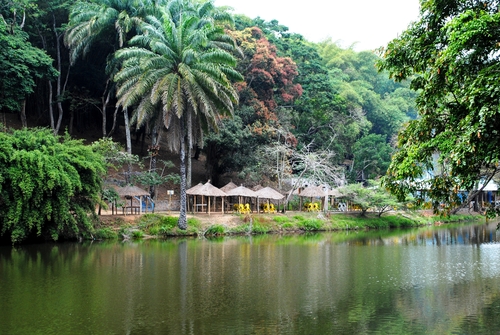Millions of people across the globe flocked to theaters to see The Black Panther. The movie tells the story of Wakanda, a mineral rich African nation with enough resources to aid the entire world. Wakanda survived throughout the centuries because they used their advanced technology to cloak themselves from the rest of the world.
One can argue that this film is based off of a real-life Wakanda—The Democratic Republic of Congo (DRC). Look at Wakanda’s position on a map; it is located in mineral-rich eastern Congo, the region where the materials (tin, tantalum, tungsten, copper, etc.) that make our electronics work come from.
When we think of DRC today, however, we think of war, famine, child soldiers and the place where Oprah Winfrey once called “The most dangerous place to be a woman,” because of the horrific acts of sexual violence that have transpired since an African World War erupted in the 1990s.
Though these stories are indeed true, there have always been more stories of beauty emanating from the Congo that have not been told. It seems as if the American media can only handle one African conflict per decade (famine in Ethiopia in the 1980s, Rwandan genocide in the 1090s, Sudan in the early 2000s, Congo now). Left to the commercial media, the complete history of the Congo will never be told. We must correct that, starting with the story of pre-colonial Congo.
Before Belgium colonized the Congo in the late 1800s, the Congo region was comprised of sophisticated kingdoms with political systems in place. The two main kingdoms were the Kongo Kingdom in the west and the Luba-Lunda states in the east.
The Kongo Kingdom was comprised of present-day DRC and parts of Angola, a country later colonized by Portugal. The Kongo Kingdom was established in the 1300s. M’banza Kongo, located near the Congo River, became its capital and the manikongo (“King of Kongo”) was its ruler who ran the kingdom as a centralized state. The Luba-Lunda kingdom was comprised of parts of modern-day eastern Congo, Angola, and Zambia. Its capital rested near the Kasai river.
In addition to the vast mineral wealth that these kingdoms controlled, it is also important to note that these kingdoms also possessed an organized religion, as was the case with most of precolonial Africa. Terms like “heathen,” “uncivilized” and “savage” were false terms used by Europeans to justify slavery and colonization.
Many believed in a supreme being that they referred to as “muntu.” Below muntu were various spirits similar to western saints, as well as ancestral veneration. Within the living society there existed priests and healers.
Prior to the arrival of Europeans to the west and Arabs to the east, the Congo region was as sophisticated politically as any place in the world. From an African-centered theology to an oral based constitution for governing, the Congo region was indeed a real-life Wakanda.
The Congo sits on some of the largest deposits of copper, gold, diamonds, cobalt, coltan, oil as well as uranium, which was used to create the atomic bomb dropped on Hiroshima in 1945.
In this space, we will continue to unpack a more nuanced history of the Congo to counter the narrative placed on Congo by western media and literary outlets.
Dr. Omekongo Dibinga is a professor of Cross Cultural Communication at American University. He is the founding director of UPstander International, a company that provides leadership & diversity trainings worldwide. For more information, please visit www.upstanderinternational.com.
Originally posted 2018-06-18 18:18:26.








